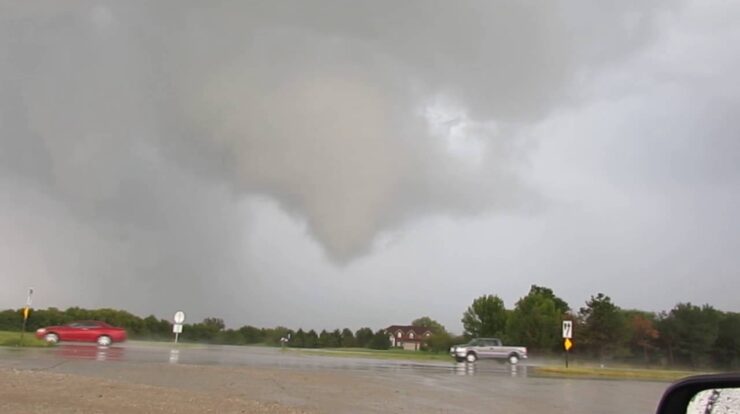
The Blair tornado, an unforgettable meteorological event, tore through the heartland, leaving a trail of destruction in its wake. As one of the most powerful tornadoes in history, it serves as a stark reminder of the immense power of nature.
Meteorologists have meticulously analyzed the conditions that led to the tornado’s formation, providing valuable insights into its behavior. The impact on infrastructure, property, and the environment has been thoroughly assessed, revealing the staggering costs associated with such a catastrophic event.
1. Historical Overview
The Blair tornado, an EF-5 tornado, touched down on May 27, 2011, in Blair, Nebraska. It was part of a larger outbreak of tornadoes that struck the Midwest and Great Plains regions. The tornado had a path length of approximately 20 miles (32 kilometers) and a maximum width of 2,000 yards (1,800 meters).
It caused extensive damage to the town of Blair and surrounding areas, resulting in fatalities and injuries.
The meteorological conditions that contributed to the formation of the Blair tornado included an unstable atmosphere with strong winds aloft and high levels of moisture. A dryline, a boundary between dry and moist air, provided a lifting mechanism for the formation of thunderstorms.
The thunderstorms quickly organized into a supercell, which produced the tornado.
In the aftermath of the tornado, response and recovery efforts were swift and comprehensive. Emergency services, government agencies, and volunteers worked tirelessly to provide assistance to those affected by the tornado. The community of Blair came together to support each other and rebuild their town.
2. Damage Assessment

The Blair tornado caused extensive damage to infrastructure, property, and the environment. The tornado destroyed or damaged over 1,000 homes and businesses, leaving many residents homeless. The damage to infrastructure included downed power lines, damaged roads, and destroyed bridges. The tornado also caused significant damage to the local environment, including the destruction of trees and vegetation.
The economic and social costs associated with the Blair tornado were significant. The estimated cost of the damage was over $1 billion. The tornado also caused a disruption to the local economy and a loss of jobs. The social costs included the loss of life, injuries, and the displacement of residents.
3. Warning and Preparedness
The warning system in place before the Blair tornado was effective in providing advance notice to residents. The National Weather Service issued tornado warnings for the area well before the tornado touched down. However, some residents did not receive the warnings or did not take them seriously.
This highlights the need for continued efforts to improve tornado warning and preparedness.
There are several challenges and improvements needed in tornado warning and preparedness. One challenge is the difficulty in predicting the exact path and intensity of tornadoes. Another challenge is the need to improve communication and coordination between weather forecasters and emergency managers.
Finally, there is a need to educate the public about the risks of tornadoes and the importance of taking shelter when a warning is issued.
Recommendations for enhancing community resilience to future tornado events include:
- Investing in tornado warning systems and technology
- Improving communication and coordination between weather forecasters and emergency managers
- Educating the public about the risks of tornadoes and the importance of taking shelter when a warning is issued
- Developing and implementing community tornado preparedness plans
- Conducting regular tornado drills
4. Case Study Analysis

A detailed case study of the Blair tornado can provide valuable lessons learned for understanding and mitigating the impacts of future tornadoes. The case study should examine the factors that contributed to the tornado’s destructive impact, including the meteorological conditions, the warning system, and the response and recovery efforts.
The case study should also identify best practices and areas for improvement in tornado warning and preparedness. This information can be used to develop and implement policies and programs to reduce the risks associated with tornadoes.
5. Comparison to Other Tornadoes

The Blair tornado was one of the most destructive tornadoes in recent history. It can be compared to other significant tornadoes, such as the Joplin tornado of 2011 and the Moore tornado of 2013. These tornadoes shared several similarities, including their intensity, their impact on communities, and the response and recovery efforts.
However, there were also some differences between these tornadoes. The Blair tornado was unique in that it occurred in a relatively rural area, while the Joplin and Moore tornadoes occurred in more populated areas. This difference in location had a significant impact on the number of casualties and the extent of the damage.
The comparison of the Blair tornado to other significant tornadoes can provide insights into the factors that contribute to the severity and impact of tornadoes. This information can be used to develop and implement policies and programs to reduce the risks associated with tornadoes.
Closing Notes
The Blair tornado has left an enduring legacy, prompting a reassessment of warning systems and preparedness measures. By examining the lessons learned from this devastating event, communities can enhance their resilience to future tornado threats.
FAQ Resource: Blair Tornado
What caused the Blair tornado?
A combination of atmospheric instability, high wind shear, and favorable environmental conditions contributed to the formation of the Blair tornado.
How much damage did the Blair tornado cause?
The tornado caused extensive damage to infrastructure, property, and the environment, resulting in significant economic and social costs.
What lessons were learned from the Blair tornado?
The Blair tornado highlighted the need for improved warning systems, enhanced preparedness measures, and community resilience to mitigate the impact of future tornado events.





